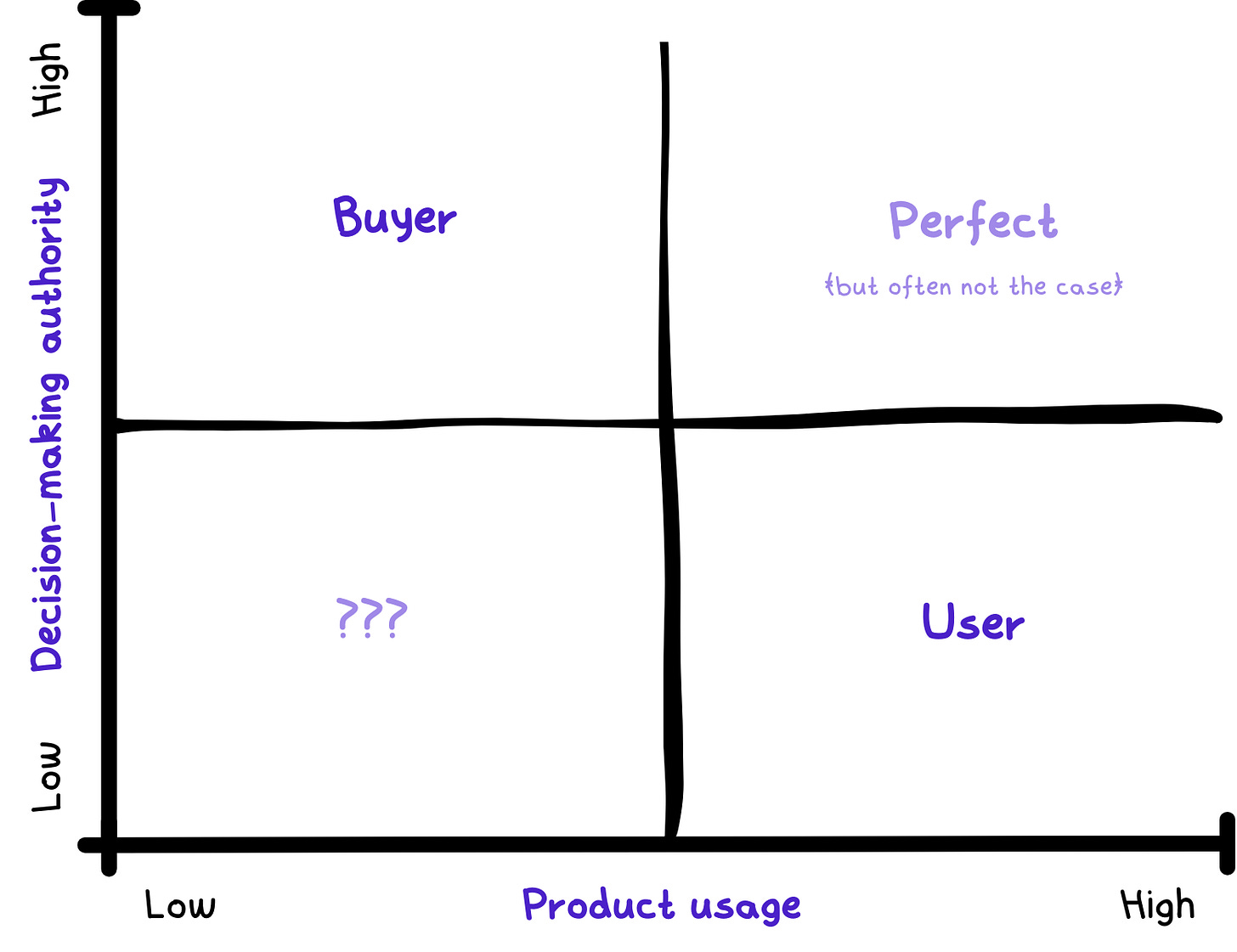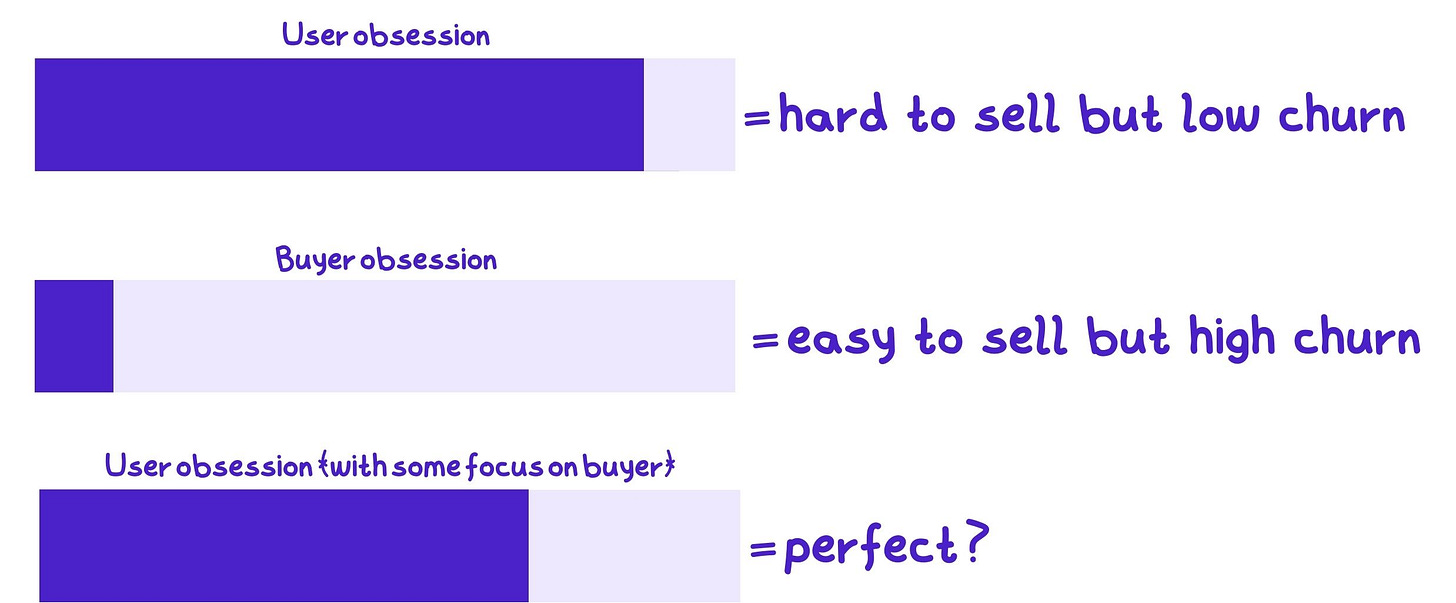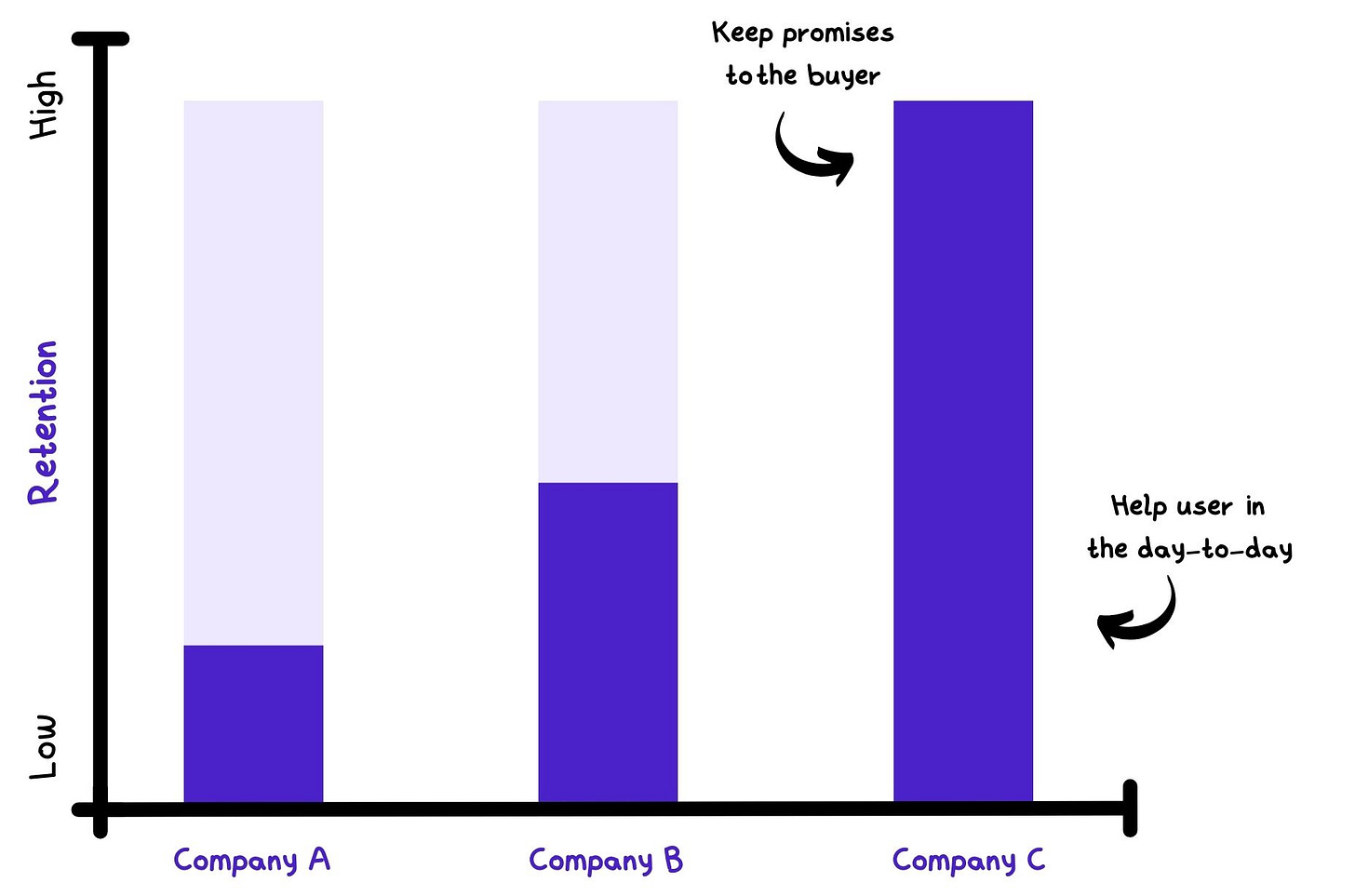If you work for a B2B company you know this problem very well. You are selling software to businesses (your customers) but businesses rarely use software, people do (your user). In addition there is usually the person that makes the buying decision (the buyer) for the company you sell to, making this even more complex. Note: For some B2B software companies the buyer and the user are the same, for most this is not the case.
User, Customer, Buyer
Let’s quickly define what a user, a customer and a buyer are.
User: The people that use your product. 🤓
Customer: The entity you send invoices to. For a B2B company this would be the company your users work for. 🏢
Buyer: The person that decides if your product is bought. This is usually the person that represents your customer, in most cases an executive with decision-making authority. 👩💼
(If you operate a B2C product, the 3 are usually the same person)
For B2B companies, it's critical to distinguish between three key roles: the customer , the user and the buyer. Your products or services are purchased by organizations. Within these organizations, you must convince a decision-maker that your offerings add value to their business. However, the individuals who use your products or services daily are most likely different from these decision-makers. This difference is not just a minor detail; it defines how you design, market, and support your products.
Some examples
Salesforce CRM
User: Sales Managers, RevOps Data Analyst, …
Customer: SaaS businesses
Buyer: CRO
SAP ERP
User: Procurement, Materials manager, Financial analyst, …
Customer: Large Enterprise
Buyer: CIO
Figma
User: UX/UI Designer, Product Manager
Customer: Software businesses
Buyer: CPO / Head of Design
Who are you building for?
Let's dive deeper into this distinction. In a B2B scenario, the buyer refers to the organization, or more specifically, the decision-makers within that organization, that pays for your product. These decision-makers usually focus on the broader business needs: cost efficiency, scalability, and how the product fits into the organizational ecosystem. The users, employees within the customer organization, interact with the product regularly. Their concerns lean more towards usability, functionality, and how the product helps them solve one of their problems.
Organizations that are heavily sales-led often offer products packed with demo-friendly features, which, while appealing at first, tend to be less usable to day-to-day users and have high(er) churn rates. In contrast, product-led companies typically develop products that excel in user satisfaction. However, without close collaboration with their sales teams, these products can be challenging to pitch, demo, and sell.
The gap between the buying persona, who decides on the purchase, and the user persona, who actually uses the product, frequently results in misaligned expectations. Consider a product that's chosen for its promise to boost productivity and provide valuable reports for management. If this creates additional work for employees, their satisfaction can drastically decrease. This dissatisfaction might drive the organization to seek alternative solutions.
On the contrary, creating a product that excels for the user but fails to demonstrate clear value to the buyer, poses a different but significant challenge. It will either result in your product being overlooked initially or discontinued later if buyers perceive it as failing to deliver any or too little return on investment.
How to solve this?
How do B2B companies navigate this complex dynamic?
The solution lies in balancing the needs of both the buyer and the user within the development and marketing of your products. Even though conventional wisdom is to narrow down who you build for as much as possible, I strongly believe that this is something, where splitting your attention is actually the right way to go. This is the key to long-term customer retention and satisfaction. The promises made to the buyer need to be held, and in the end, successful users mean happy customers.
Here are a few strategies to apply:
Understanding who you build for: Identify your buyer and your users. Knowing your buyer's motivations allows you to tailor your product to meet their needs. Similarly, understanding your users' motivations ensures your product solves their problems. Focusing on only one group risks losing the other, affecting retention.
Key Questions:Who buys your product and why?
What do buyers aim to achieve?
How are buyers and users connected?
Who uses your product and for what purpose?
Go-to-Market: Your marketing should address both buyers and users. Emphasize your product's strategic benefits for decision-makers and its practical advantages for users. This helps to bridge the gap between customer expectations and user needs. In addition it will help you to educate both users and buyers about the others needs (You would be surprised, by how often, buyers are not aware of what users need and vice-versa)
Feedback: Companies often communicate with only buyers or users after purchase. This can lead to missed expectations with those you are not talking too anymore. (Getting to know about this dissatisfaction in the email to cancel the subscription is far too late) Regularly engage with both, users and buyers, to ensure they see your product's value.
By addressing the needs of both the customer (buyer) and the user, B2B companies can create a win-win situation: products that not only meet the strategic needs of the organization but also make the day-to-day tasks of users easier and more efficient.
VERSUS Series
The VERSUS series is a set of 8 newsletter articles (2 per week) that answer questions PMs ask themselves all the time. The texts below will turn into links once the articles are live!







